#031
Adorable and Intriguing
The Fascinating Tardigrades
Megumu Tsujimoto
Japanese Color: KARAKURENAI-iro
#031
Megumu Tsujimoto
Japanese Color: KARAKURENAI-iro
MOVIE

Assistant professor
Faculty of Environment and Information Studies
Tardigrades have become popular for their incredible ability to withstand the extreme environments such as the radiation exposure, the vacuum of space, and the extreme low temperature.However, much of the ecology of this tiny “ultimate survivor,” which does not even reach one millimeter in length has been left unrevealed. Assistant Professor Megumu Tsujimoto, who specializes in Polar Ecology, has devoted herself to working on the ecology of the Antarctic tardigrades.She has participated twice in the summer party of the Japanese Antarctic Research Expedition (JARE), to conduct field surveys in order to understand the ecology of tardigrades living in the extreme environments.Furthermore, she broke the record by decades of long-term survival of tardigrades in a study in which tardigrades frozen in moss for over 30 years were successfully revived and then reproduced.
Tardigrade are animals that belong to the phylum Tardigrada. Tardigrade earned the moniker of “water bear” due to its slow, lumbering walk. Tardigrades live in a variety of environments on earth, and can be found in patches of moss and soil, as well as extreme environments like the deep sea and the Himalayas.
In particular, I have been working on the ecology of a tardigrade species Acutuncus antarcticus (hereinafter A. antarcticus). This species is endemic to Antarctica and is widespread throughout the Antarctic region. Today, over 1,200 species of tardigrade have been recorded on earth with many regions still not yet explored. Thus, we expect many more species to be found.
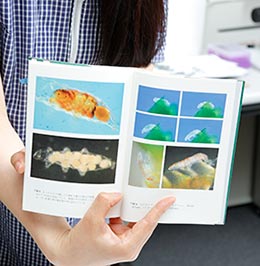
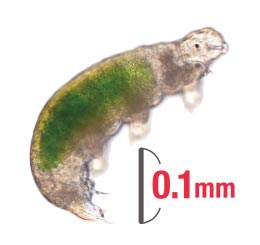
I participated in the summer expeditions of the 49th (2007 – 2008) and 56th (2014 – 2015) Japanese Antarctic Research Expedition (JARE). For the JARE 56, which was my second expedition to the Japanese Antarctic station, we brought several microscopes into the huts at the camp sites, and observed the samples we collected in the field.
Associate Professor Suzuki, the tardigrade researcher and the author of the book that sparked my interest in tardigrades, was also a member of the terrestrial biology group with me in the expedition. It was such a pleasure to work with Dr. Suzuki in the field, to make observations on tardigrades with a researcher for whom I had great respect.
The greatest delight of doing field work is being able to put yourself in the actual environment in which the organisms you are studying live, and to carry out observations on site, in the case that any questions arise.
For example during the JARE 56 summer expedition, we found a massive number of tardigrade living in a patch of green algae blooming in a stream of melted ice at the beginning of the summer when we first arrived in Antarctica. Later when we visited the next time at the end of the summer, we found the stream was frozen.
I wondered how the tardigrades reacted to the change of their habitat, so I took the frozen algae sample back to our hut and observe them under the microscope. Then, I found the tardigrades revived and became active just an hour after we had thawed the frozen algae sample.
Without going out in the field, it was impossible to observe at first-hand how the Antarctic tardigrades survive and live in the extreme environment which repeatedly freezes and thaws.
The environment in Antarctica changes dramatically even during the short summer season. One day it is so hot that you sweat walking to a research site, and another day there is aa raging blizzard. The direct experience of the actual environment such as the dramatically changing weather gives me a point of reference when considering the experimental conditions in the lab, and more importantly the feeling of admiration and respect toward the vitality of the organisms living in the harsh environment of Antarctica.
I am confident my experience of the field work in Antarctica deepened my understanding of the ecology of the Antarctic tardigrades.
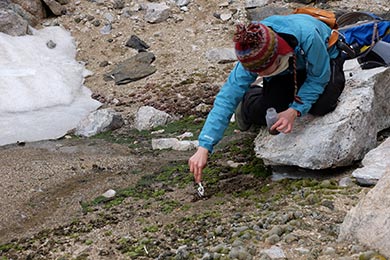
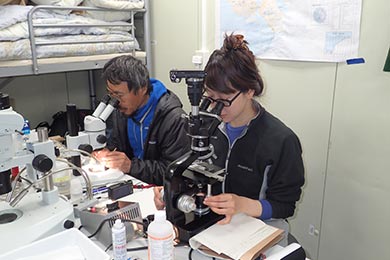
The 56th Japanese Antarctic Research Expedition (JARE 56) was the first to carry out the in-depth survey of tardigrades living around Syowa Station. In the right photo, Tsujimoto (front) and Associate Professor Suzuki are observing the samples collected in the field under the microscopes in a hut built on an ice-free area away from Syowa Station. The JARE 56 terrestrial research team carried out sampling at an ice-free area where the terrestrial research teams had never visited before for the vegetation and tardigrades survey and also in the intertidal zones for the marine tardigrade survey in order to deepen understanding of the ecology of the Antarctic tardigrades.
Tardigrades have the ability to temporarily shut down their metabolic activities, which is called cryptobiosis. In 2014, my research group extracted adult tardigrades and an egg from a moss sample which had been frozen for over 30 years, and succeeded in recording the process of their resuscitation and hatching of the egg and their reproduction after the revival. The previous longest records of the long-term survival of tardigrades were 8 years in adult under the frozen condition and 9 years in eggs at desiccated state preserved at room temperature. Therefore, we were able to break the records of the long-term survival of tardigrades by decades.
In the study, the moss sample was collected near Syowa Station in Antarctica in November 1983, and stored frozen at -20°C at National Institute of Polar Research in Tokyo. We thawed the sample and soaked in water, then picked up 2 resuscitated adult tardigrades and an egg and reared them in the lab. While an adult did not recover completely and died a while later, another adult sufficiently recovered. The fully resuscitated adult and the hatchling of the resuscitated egg went on to successful reproduction and laid eggs multiple times.
The long recovery time required for the resuscitated animals, and the longer time required for the first egg laid after the revival to hatch indicated possible damage accumulated over the long period of storage, and also suggested that the resuscitated individual and egg possibly recovered from the damage.
A key aspect of our research was that we documented and reported the recovery conditions and reproduction following the revival of the tardigrades in detail, and not just simply reported their resuscitation. Our research was the first to present such detailed conditions, and with further experiments and investigation we will be able to develop better understanding of the mechanisms underlying the long-term survival of these organisms in cryptobiosis.

I have been working on the survival strategies of the tardigrades, A. antarcticus, living in the terrestrial environments in Antarctica. My particular focus is on their reproductive ecology, and as a part of the research we observed A. antarcticus under the microscope every day for 7 months and monitored their life history traits such as lifespan, growth and reproduction.
The species, A. antarcticus is parthenogenetic, and they lay eggs approximately once a week under the constant culture condition at 15 °C. Each time the tardigrades laid eggs, I picked up and separately reared those eggs and recorded the number of the eggs laid, the time until they hatched, and the percentage of the eggs successfully hatched. I began this study with approximately 120 tardigrades, so I spent 5 to 6 hours a day looking into the microscope in the beginning of the study when there were so many eggs that I needed to pick up and monitor.
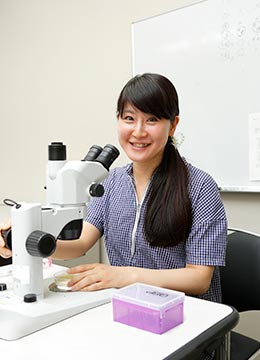
With the results obtained from our study, we found out the Antarctic species A. antarcticus has a very high hatching success (rate)compared to that of the other tardigrade species previously reported. More interestingly, A. antarcticus lay eggs constantly until they die, and the hatching rate of the eggs did not show a major decrease as they age. In other words, age did not appear to have a significant effect on the reproductive ability of A. antarcticus in our study. The high fecundity and fertility of A. antarcticus throughout their lives is considered one of the survival strategies of this species to survive and reproduce in the short summer with the limited water availability of the Antarctic terrestrial environment.
I would like to continue my research on the reproduction of A. antarcticus and further investigate why reproductive senescence is minimal in this species.
There is no previous research which obtained data from the daily observations of tardigrades taken for over half a year. While it was quite overwhelming to spend so many hours staring into the microscope every day for such a long time, these efforts allowed us to obtain highly valuable data for the first time in tardigrade study.
There are still few researchers who work on the microscopic animals that live in the Southern Ocean. Those animals include tardigrades, nematodes and kinorhynchs, and our knowledge on their ecology is scarce. Under such circumstance, I launched a project with young taxonomic researchers in Japan to investigate the diversity and speciation of the marine benthic microorganisms (*) of the Southern Ocean. In this project which I am leading, we are planning to carry out diving operations for 2 consecutive summer seasons in 2020/21 and 21/22 with JARE. I am also planning to participate in the JARE operation, and this time I would like to give lectures at SFC from Syowa Station in Antarctica through satellite.
Just like many other fields of research, the impact of climate change on the wildlife in Antarctica is quite a hot topic. It is essential to obtain the very fundamental data such as diversity and distribution of species in order to build up the research as to understand the impact of climate change.
With the taxonomists specializing in various animal groups, I would like to further investigate the process of the speciation and evolution of the microorganisms living in the Southern Ocean, and develop our understanding of the Antarctic ecology in much larger scale.
In my career, I have been engaged with many international collaborative projects and worked with researchers in other countries. At the same time I admire the high productivity and strength in logical thinking of researchers in foreign countries, I always appreciate the quality of the data Japanese researchers often can produce from their steady efforts and careful works. While working with talented researchers in Japan including the staff and students of SFC, I would like to build upon this strength of the Japanese researchers, and increase our presence in the Antarctic Science. * Microscopic animals such as tardigrades that live in the sand on the bottom of the sea.
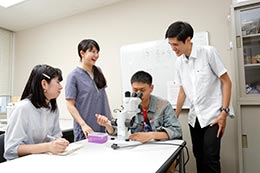
In the laboratory, Tsujimoto works with students on the Antarctic terrestrial organisms including tardigrades as well as flowering plants growing on the Antarctic Peninsula. “I’ve always worked on my research alone, so I’m really looking forward to working with the SFC students.” (Tsujimoto). There are many international collaborations carrying out in the Antarctic, and she engages with many researchers in foreign countries. She would like to take the students to the international science conferences and workshops so that they will gain experiences in international collaborations.
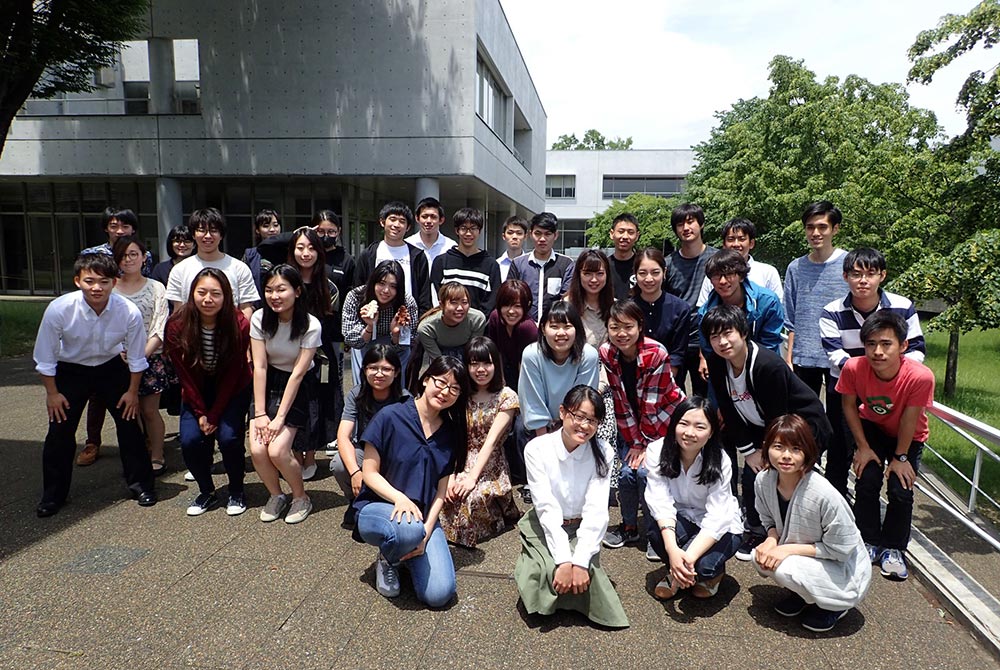

Megumu Tsujimoto
Assistant professor, Faculty of Environment and Information Studies, Keio University. Completed the five-year Doctoral Program at Department of Polar Sciences at School of Multidisciplinary Sciences at Graduate University for Advanced Studies (SOKENDAI).Specializes in Polar Ecology. Ph.D. (Philosophy).

2019.Oct ISSUE